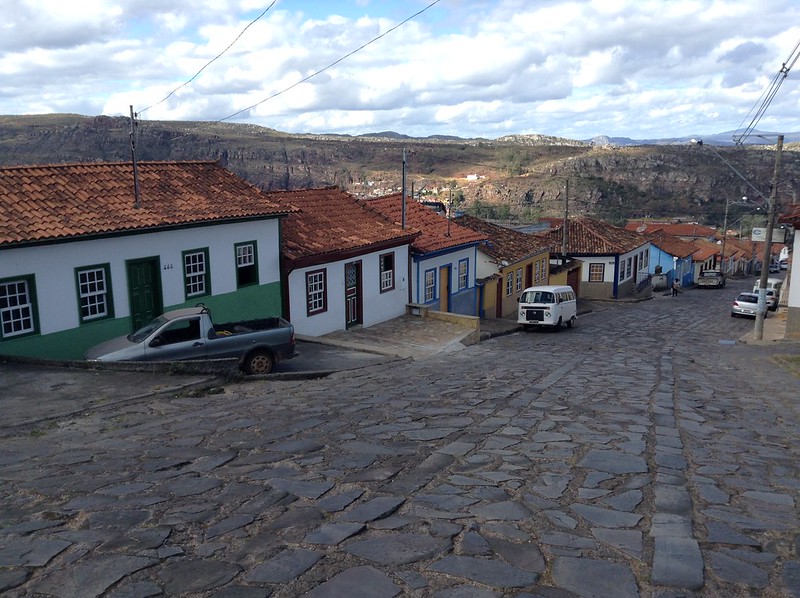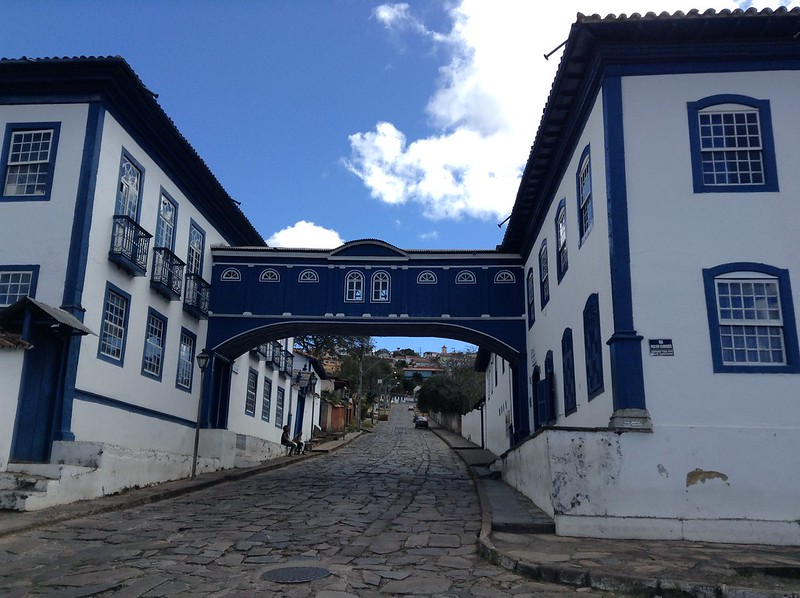The Estrada Real is one of the oldest roads in the Americas, built at the end of the 17th century. It stretches 1,500 km from the coast of Brazil to the interior mining town of Diamantina.

A lot of roads were being built at that time, including the 190-km Boston Post Road in New England, which was once used to transport mail by horseback between Boston and New York City (also passing by my first apartment in New London, CT). The Estrada Real, however, was one of the most important roads on earth because it supplied about 70 percent of the world’s gold.
I traveled the length of the Estrada Real over the past few weeks, inspired to do so in part by a book called “Journey on the Estrada Real,” a first person-narrative by the Connecticut-based writer Glenn Cheney (father of a high school friend of mine) about walking the road a decade ago.
It’s a popular thing to do: I met bicyclists touring long sections of the Estrada Real, and a number of tourists from around Brazil following it as a way of exploring their heritage. I doubt if anywhere else in the Americas is there such a string of gorgeous colonial towns.
The Estrada Real originally began at the Atlantic port of Paraty, but then it was shortened to go to the port of Rio de Janeiro, which enriched the city and helped make it the capital of Brazil for nearly two centuries, from 1763 to 1960 (when Brasília was built). From Rio de Janeiro, I went first to Petrópolis…
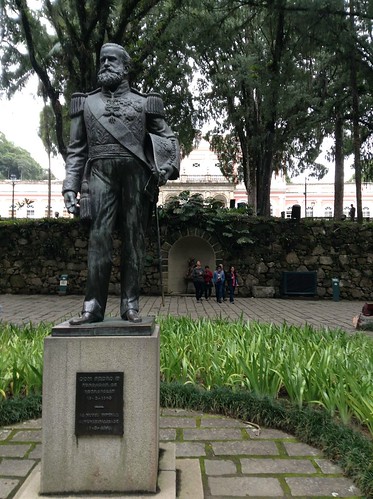
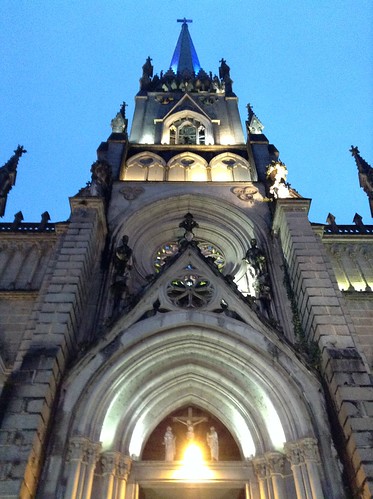
PETRÓPOLIS: Here we have a photo of Dom Pedro II and the Catedral de Petrópolis. Dom Pedro II was the emperor of Brazil from 1831 to 1889, during which time he built himself a town called Petrópolis (“city of Pedro”) in the mountains outside Rio de Janeiro. During the hot summers, Pedro retreated to Petrópolis by riding here along the first 70 kilometers of the Estrada Real.
Pedro’s former palatial residence in Petrópolis is now the nation’s most-visited museum. Petrópolis is also known as the home of Brazil’s oldest beer, Bohemia, so I took an extravagant three-hour brewery tour. Among the displays were an interactive digital history of beer-making, including this factoid from Hammurabi’s Code: “If beer of poor quality reaches consumers, the person responsible for its production shall be drowned.” (If Brazil followed this code, there’d be a beer shortage.)
It happened to be the same weekend as the Petrópolis Bauernfest (Beer Festival), and so the brewery was packed, the bratwurst was grilling, and the awful polka-music was playing. I escaped to hike the Travessia Petrópolis-Teresópolis through Parque Nacional da Serra dos Órgãos.
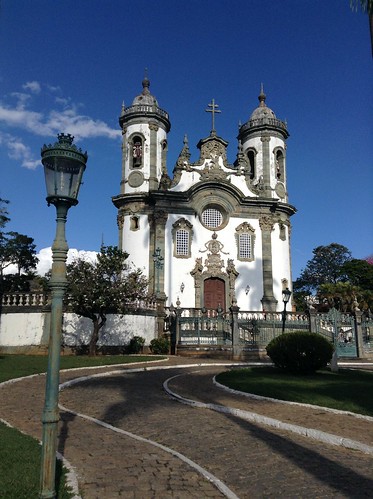
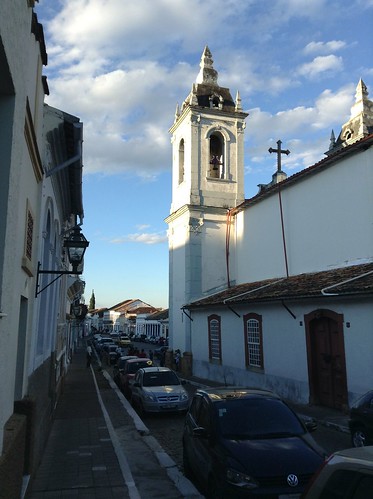
SÀO JOÀO DEL REI: From Petrópolis, I traveled 275 km north via two buses into the state of Minas Gerias and to the dusty working-class town of São João del Rei, which actually put me on the older Caminho Velho (“Old Road”) of the Estrada Real.
This is where I really started to see the influence of colonial Portugal’s architecture, which is more baroque (curvaceous) than Gothic (angular). You can see it in the three churches from São João del Rei that are pictured above (the second, called Igreja de São Francisco de Assis, was designed by the famous Brazilian architect Aleijadinho).
At the same time, São João, which also had a stinky central canal and an ugly mix of old and new buildings, felt more real than some of the other Disneyfied colonial towns along the Estrada Real that are postcard-perfect and overwhelmed with tourists and run-up with tourist-prices. Which I appreciated. The food, especially the empadas (a mini meat pie) seemed especially good here.
From São João del Rei, a creeky old train runs the 10 kilometers to Tiradentes, but it costs like $20 one way, while a bus is only $2, and running is free. So I ran to Tiradentes one morning, which was culturally beneficial because it happened to bring me along part of the actual old Estrada Real, marked by a big metal beam…
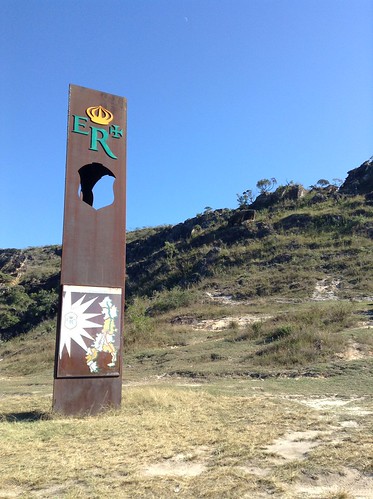
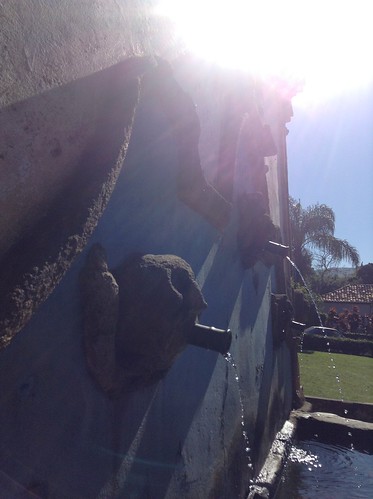
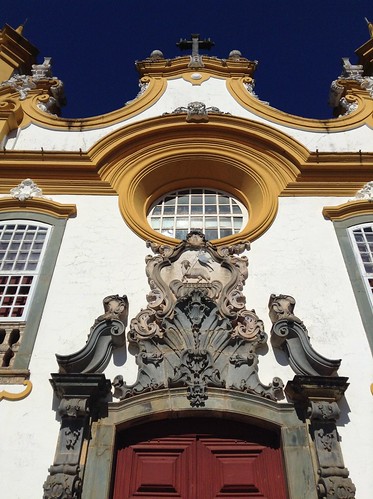

TIRADENTES: If the Epcot theme park at Disney World had Brazil pavilion, it might look like Tiradentes.
At one time, Tiradentes was a gold-rush town, which funded all kinds of extravagances. Like, a gorgeous public fountain built in 1749, so that locals wouldn’t muddy their feet walking to the nearby stream. And a church designed by Aleijadinho that is plastered in real gold (photos inside not permitted). Even the slaves were richer here: they had funds to build their own cathedral, which is filled with Black saints.
Horse-drawn carriages still roam the streets. Fittingly, many are covered in Disney characters such as Micky Mouse, or other cartoons such as Batman…
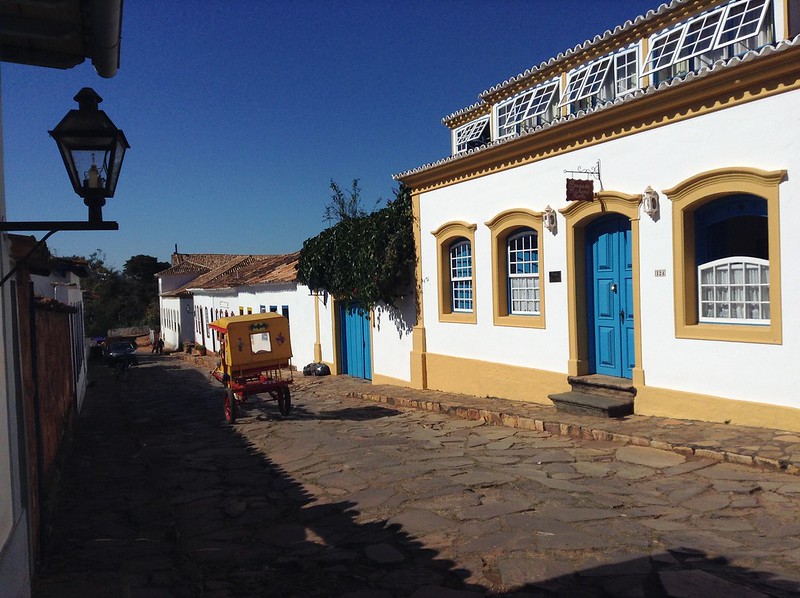
From Tiradentes, I ran back to São João del Rei and caught a two-hour bus to Congonhas (where I regrettably neglected to visit another famous cathedral by Aleijadinho), caught a one-hour bus to Ouro Branco, and then hitch-hiked (locals call hitchhiking “corolla,” like the Toyota model that I drove in high school) to Ouro Preto…
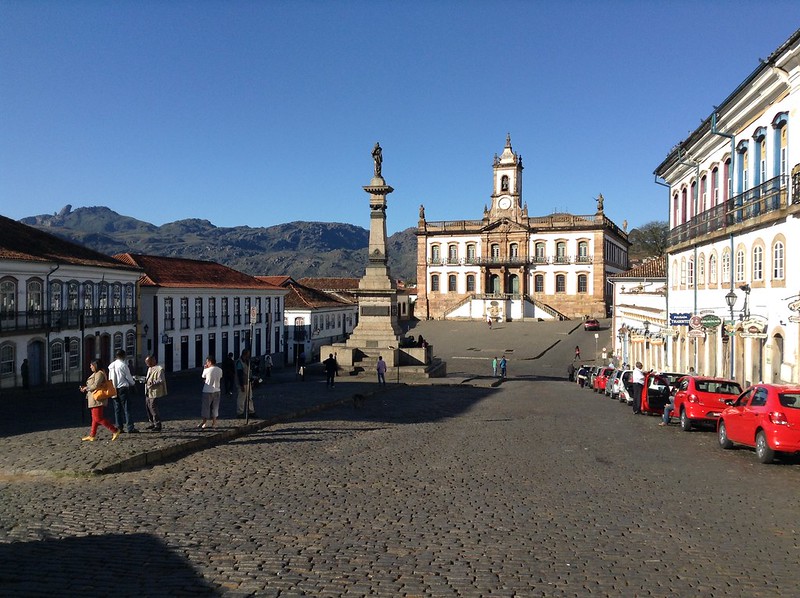
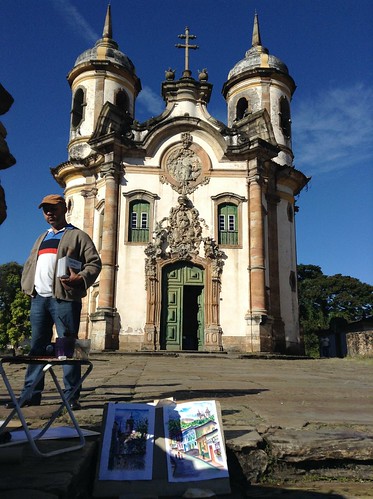
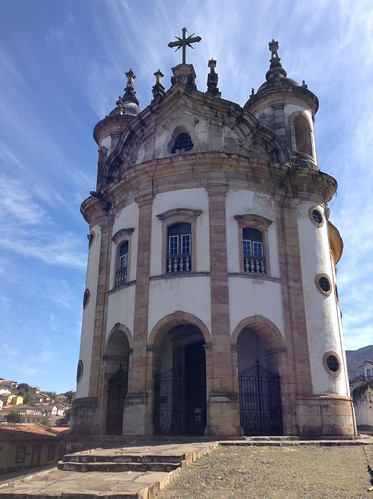
OURO PRETO: The first thing I’ll say about Ouro Preto is the first thing that everyone who has been to Ouro Preto has said to me: Os morros, nossa! (“Mother of God, the hills!”) It’s a hilly town, which turns any stroll into a calf-burning workout.
The hills also add to the beauty and create interesting nooks, curvy streets, pinnacle vistas — it’s like the landscape itself is baroque. The city is framed by a mountain called Pico do Itacolomi (it’s the phallic-like peak in the background above).
This is also the birthplace of O Aleijadinho, “the little cripple.” Only in Brazil could that be an endearing nickname. Aleijadinho was born as Antônio Francisco Lisboa, and he became a well-known sculptor and architect before losing his fingers and the use of his hands from leprosy. But he kept working. He just tied a chisel to his forearms, and that’s how he built the Church of Saint Francis of Assisi, pictured above left.
But why did Aleijadinho build here, of all places, in the remote hills of Brazil, far from the coast and the European capitals? Ouro Preto literally means “Black Gold,” and the rock made the city rich in the 18th century and swelled the population to 100,000 people, the same as in New York City then.
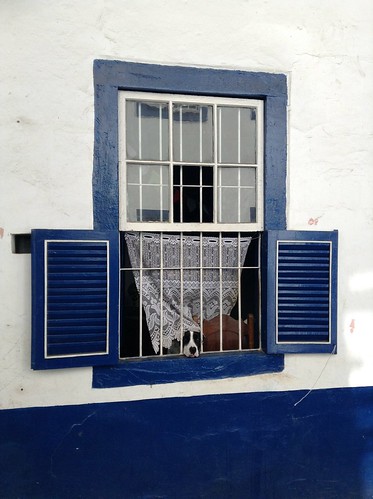
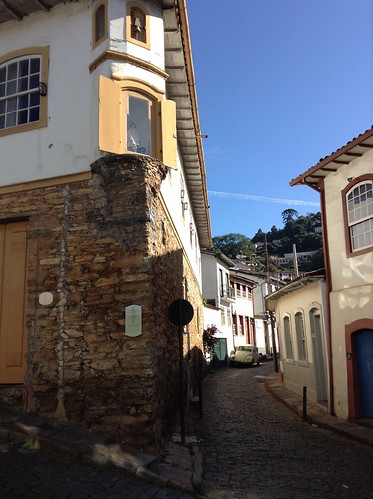
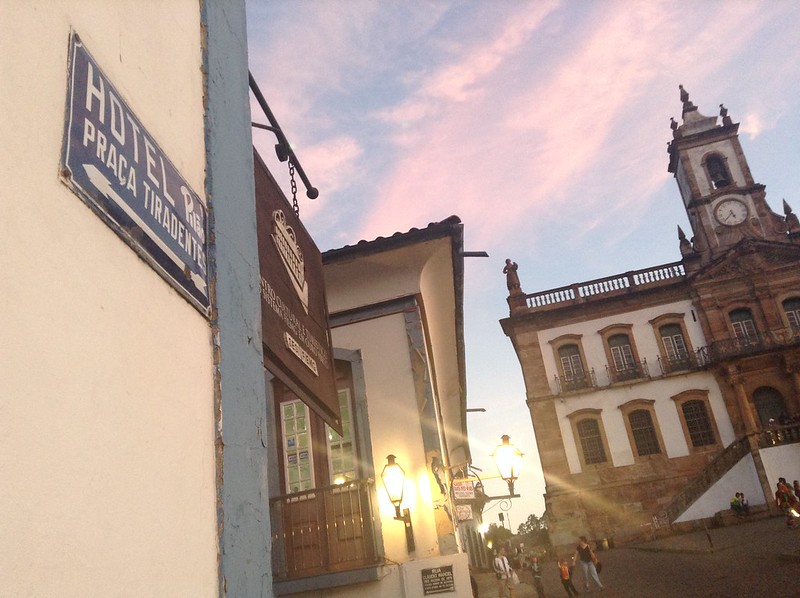
From Ouro Preto I took a detour off the Estrada Real to climb Brazil’s third-tallest mountain, and then rerouted back onto the former gold route to the tiny town of Serro…
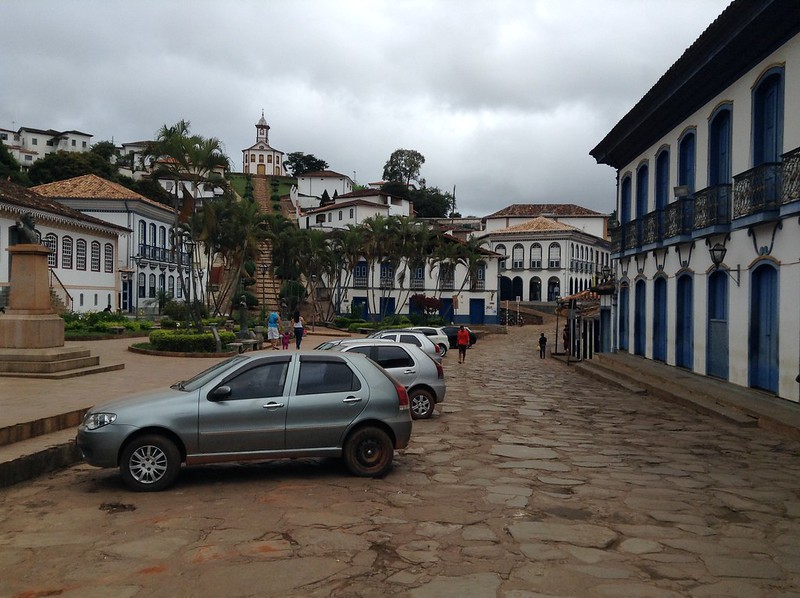
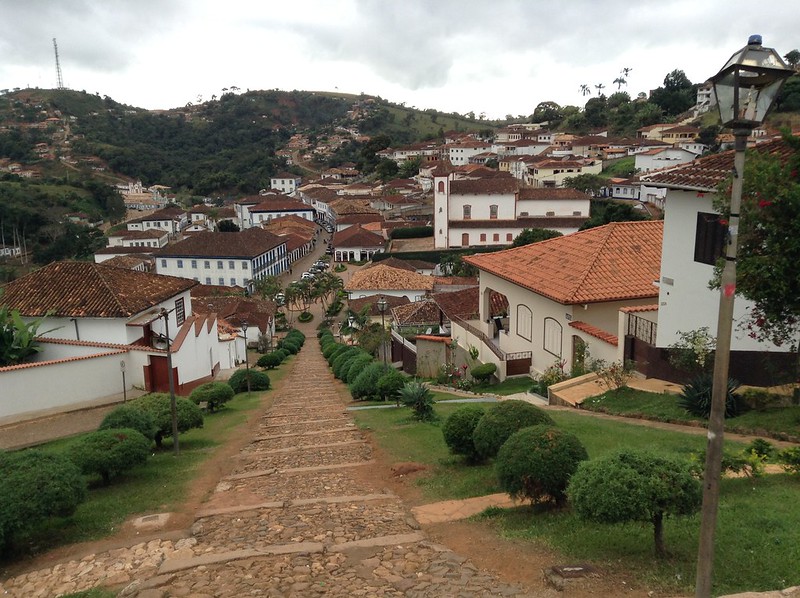
SERRO: Visiting Serro was accidental. I had intended to bypass the city, but that mountain-climbing detour had taken me so far off the Estrada Real that it took me nearly two days of buses just to get to Serro, and I was happy for the rest point.
Moreover, buses make me hungry. Serro is supposed to have the best cheese in Brazil. I like cheese. So that evening I went out in search of the most famous cheese in Minas Gerais, a state that is famous for its tasty cheese.
I found an empty little restaurant. The owner seemed happy to have a customer, and I was happy to see the menu had cheese, which I ordered. She reached for a plate; it was visibly grimy. I think she noticed that I noticed this. So she began wiping it off with what seemed to be a dirty rag. My lip curled.
Then she began cutting cubes of cheese onto the plate, so much cheese that I actually had to tell her to stop cutting because I feared what an overflowing platter of cheese would do to my bowels. Then she put the whole plate into a microwave, turning it into a big pool of cheese and making me wonder why she’d bothered to dice it into cubes to begin with.
She put the plate in front of me, along with a fork and a shaker of basil. I ate all that melted cheese and wanted to lick up the grease. All the while the restaurant owner was fiddling behind the counter, talking really fast about a lot of things that I didn’t understand. To my relief, she started talking with a young man who had come inside and ordered a coffee. After he left, I asked if he was a taxi driver. She said she didn’t know, that she’d never seen him before, that he seemed kind of creepy, and that I should be careful when I left because the city could be dangerous at night.
But I least I was full of delicious queijo do Serro.
The next morning I caught a bus two hours north to the end of the Estrada Real…
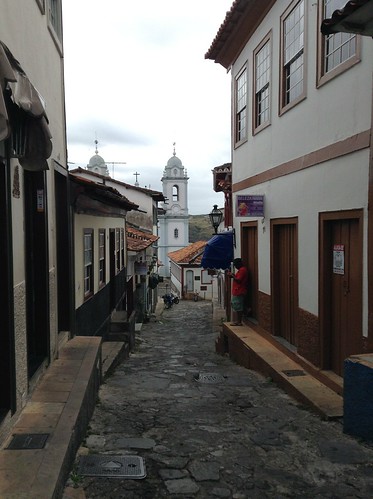
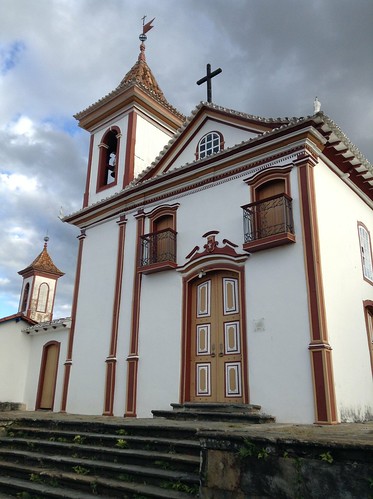
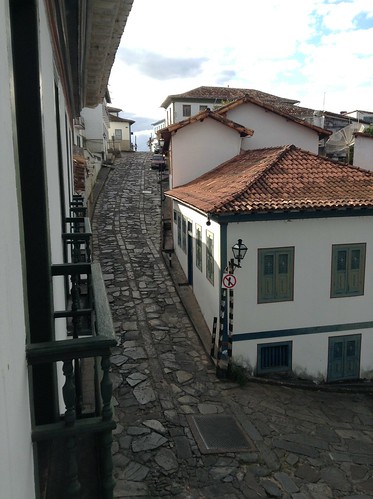

DIAMANTINA: What’s a fitting name for a place full of diamonds? Diamantina, of course. Like Ouro Preto and Tiradentes, this whole town has been designated as a UN World Heritage Site, which means that it’s stunning. In the 18th century, the diamond mines around here funded the building of baroque cathedrals, winding cobblestone streets, and colonial architecture set in the mountains at 1,114 meters (making it one of Brazil’s highest-elevation cities).
I also found a bookstore with a selection of random English-language books, including an old collection of aphorisms, such as this good advice: “To win the mistress, first bribe the maid.”
But at some point, you hit colonial-town-fatigue. All the museums seem to show the same thing, the elaborate crucifixes just look morose, and the hilly streets lose their charm and just become hilly streets.
My last day in Diamantina, I didn’t even go into the town. I went for a long run down a hot dirt road to a remote abandoned mining village called Biribiri, and then ran back to my hostel on the outskirt of town. That evening I sat on the hostel veranda with a few Brazilian travelers, drinking wine and munching on amendoim crocante (crunchy nuts), listening to Brazilian music and swapping tales about our favorite places along the Estrada Real.
